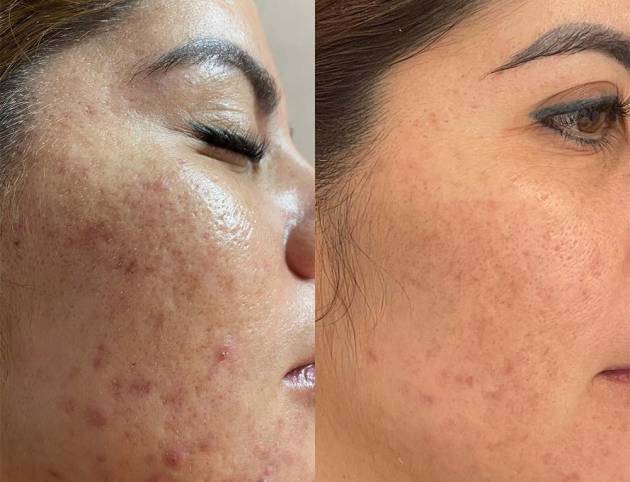
How you prepare
Choose a doctor with knowledge of the skin and procedure — a dermatologist or dermatologic surgeon. Results can be variable and depend on the expertise of the person doing the peel. Improperly done, a chemical peel can result in complications, including infection and permanent scars.
Before you have a chemical peel, your doctor will likely:
- Review your medical history. Be prepared to answer questions about current and past medical conditions and any medications you are taking or have taken recently, as well as any cosmetic procedures you’ve had.
- Do a physical exam. Your doctor will inspect your skin and the area to be treated to determine what type of peel you might benefit from most and how your physical features — for example, the tone and thickness of your skin — might affect your results.
- Discuss your expectations. Talk with your doctor about your motivations, expectations and potential risks. Make sure you understand how many treatments you might need, how long it’ll take to heal and what your results might be.
Chemical Peeling
A chemical peel is a procedure in which a chemical solution is applied to the skin to remove the top layers. The skin that grows back is smoother. With a light or medium peel, you may need to undergo the procedure more than once to get the desired results.
Chemical peels are used to treat wrinkles, discolored skin and scars — usually on the face. They can be done alone or combined with other cosmetic procedures. And they can be done at different depths, from light to deep. Deeper chemical peels offer more-dramatic results but also take longer to recover from.
A chemical peel is a skin-resurfacing procedure. Depending on the issues you’re addressing with the procedure, you’ll choose a chemical peel in one of three depths:
- Light chemical peel. A light (superficial) chemical peel removes the outer layer of skin (epidermis). It’s used to treat fine wrinkles, acne, uneven skin tone and dryness. You might have a light peel every two to five weeks.
- Medium chemical peel. A medium chemical peel removes skin cells from the epidermis and from portions of the upper part of your middle layer of skin (dermis). It’s used to treat wrinkles, acne scars and uneven skin tone. You might need to repeat the procedure to achieve or maintain the desired result.
- Deep chemical peel. A deep chemical peel removes skin cells even deeper. Your doctor might recommend one for deeper wrinkles, scars or precancerous growths. You won’t need repeat procedures to get the full effect.

Results
A light chemical peel improves skin texture and tone and lessens the appearance of fine wrinkles. The results are subtle but increase with repeated treatments. If you have a medium chemical peel, treated skin will be noticeably smoother. After a deep chemical peel, you’ll see a dramatic improvement in the look and feel of treated areas. Results may not be permanent. Over time, age and new sun damage can lead to new lines and skin color changes.
With all peels, the new skin is temporarily more sensitive to the sun. Talk with your doctor about how long to protect your skin from the sun.
